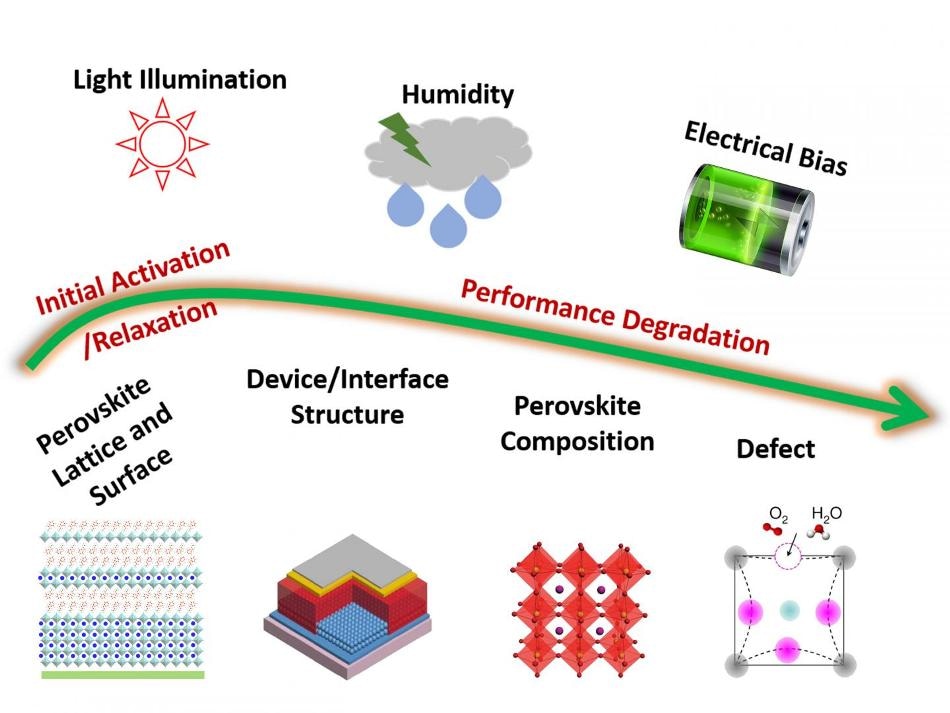Apr 11 2019
In an effort to commercialize perovskite solar cells (PSCs), their efficiency was improved to surpass 23%, and now the next biggest challenge is to increase their stability to the same level as traditional solar cells.
 The reasons for the efficiency degradation of perovskite solar cells. (Image credit: Science China Press)
The reasons for the efficiency degradation of perovskite solar cells. (Image credit: Science China Press)
Therefore, over the past several years, significant efforts have been directed toward enhancing the stability of PSCs. Many different techniques, including interface adjustment, compositional engineering, grain boundary decoration, crystal engineering, and dimensional manipulation, were used for advancing the stability of bulk perovskites. Various counter electrodes, device configurations, and carrier transporting layers were examined. Different characterization techniques were developed to compare the PSCs’ stability by elucidating the degradation mechanism. With regards to the development of PSCs, the overall stability of PSCs has turned out to be a core topic.
In the recent past, a review article, penned by professor Zhijun Ning from Shanghai Technological University, Professor Qingbo Meng from Institute of Physics, Chinese Academy of Sciences, and Professor Hongwei Han from Huazhong University of Science and Technology, et al. sums up the advanced progress regarding the enhancement of device stability and confers the directions for upcoming studies, expecting to give an outline of the present status of the research with respect to PSCs’ stability as well as guidelines for upcoming research.
The authors have informed that while significant enhancement in PSCs’ stability has been achieved, especially through carbon electrodes, the combination of high efficiency and long-term stability is yet to be solved and requires a concentrated effort to deal with this difficulty.
Where perovskite materials are concerned, the examination of surface terminal groups to avoid the formation of dangling bonds happens to be a crucial approach. Given the huge amount of molecules that can be studied, it is a prospective direction to look for novel molecules that can safeguard the perovskite surface in a more improved manner.
With regards to the stability of the device, the utilization of alternative electrodes, like oxides and carbon paste, offers another approach to prevent the aforementioned challenges. Now, for this kind of structure, the challenge would be to enhance the efficiency. Strategies, like reducing light loss and enhancing the conductivity, can be taken into consideration.
For characterizations, figuring out the mechanism through effective and detailed characterization is important to enhance the stability. Device degradation is a complicated mechanism, especially under light illumination and electrical field. Various techniques have been employed to test PSCs’ stability, resulting in a lack of comparability or reliability among the reported outcomes; this is another problem. Hence, it is important to develop commensurable protocols to assess PSCs’ stability. The first step toward achieving quick and reliable development in this field is to develop standard test protocols.